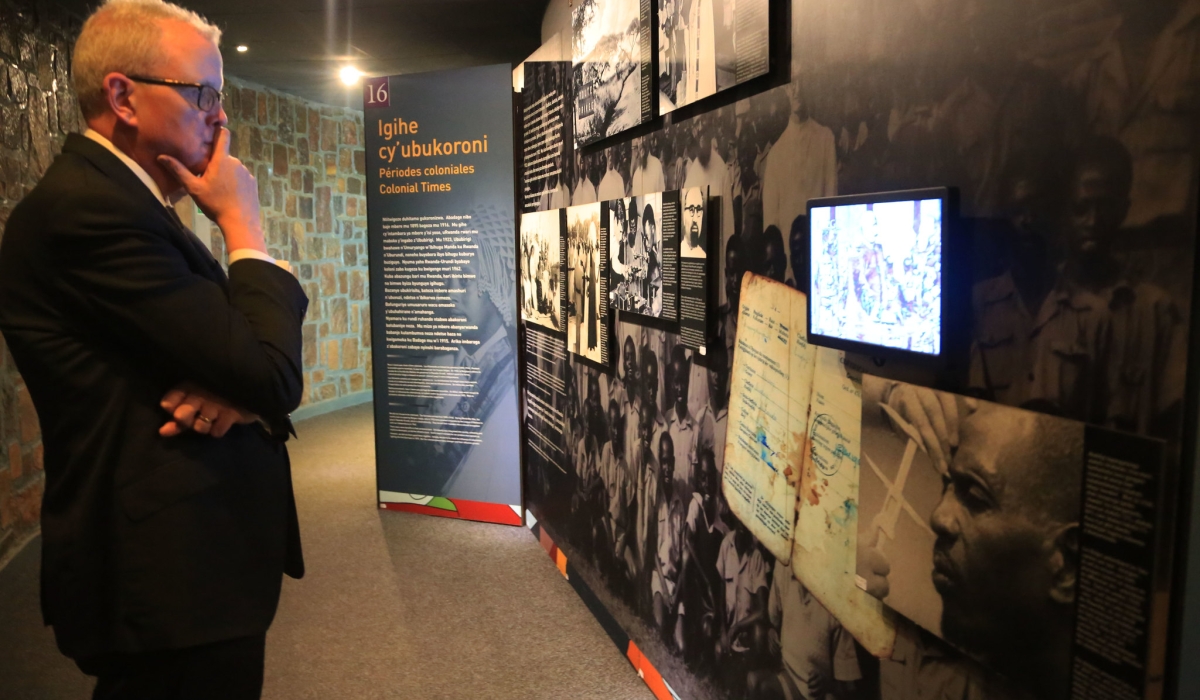If you believe the conflict in Eastern DR Congo is about minerals, you’ve been deceived by organised misinformation and intellectual laziness. This is not a mineral issue. It is a neo-colonial one, essential for all true pan-Africanists and allies of African people to learn and understand.
The reason you have not heard of it is the same reason it exists: the West believes the minerals in DR Congo are worth more than the people of the land. Africans whose lives matter more than minerals, must reclaim the narrative.
No one else bears the consequences of decisions made by foreign powers; they fall squarely on African shoulders. They do not comprehend the language of our cries. The white man is not our saviour, and his media and NGOs do not and will not advocate for us. Worse still, we cannot solve a problem we fail to see clearly.
A crisis made in Belgium
The crisis bleeding the Great Lakes region was assembled in Belgium and injected into Central and East Africa – that of divide and destroy. It is preserved by the West’s silence, due to a system that allows them to profit from the suffering of Congolese people at the hands of their corrupt leaders.
Belgium’s colonial policies fractured the Rwandan Kingdom in 1910 – assigning North Kivu to DR Congo, Kisoro to Uganda, and leaving behind a diminished Rwanda. Artificial borders orphaned Kinyarwanda speakers across neighboring territories.
Belgian-issued ID cards institutionalised division, and the chaos they implemented was later mislabeled, ‘independence’. France fueled ethnic hatred in 1994, the U.S. stalled intervention, and Belgian peacekeepers abandoned their post, leaving Africans to perish.
The pre-1994 Rwandan government and its militia, the Interahamwe, orchestrated the 1994 Genocide Against the Tutsi. These extremists – indoctrinated, motivated, and guided under Belgium’s colonial rule were empowered at Rwanda’s independence in 1959.
These extremists – financed, armed, and allied with France, slaughtered over one million people in 100 days. When the genocidal regime collapsed, these extremists – invited, protected, and preserved by the leaders of DR Congo were allowed to continue killing. For 30 years, these genocidaires repeated ethnic cleansing against Congolese Tutsi, Banyamulenge, and Hema.
Sustained by DR Congo’s leadership; a lifeline handed to them by Mobutu’s Zaire and Tshisekedi’s government today. The destruction of African lives – rooted in Belgium’s colonial policies and turbocharged by France in 1994 – has been shielded by DR Congo’s corrupt elites. This is not a new war; it is the same war, stretched across borders and decades.
The Unmasking: Who are the real thieves?
Seeing is believing and it is time to challenge the lens through which Africa’s plights are examined. The EU recently sanctioned AFC/M23 alongside Rwanda, branding them as aggressors.
Yet, the people of Goma and Bukavu welcome M23 fighters as liberators, celebrating their brothers and sisters that come with the relief of safety.
DR Congo’s leaders do not serve their people, nor the broader African continent – they answer to Western benefactors, Europe and NATO – who they allow to continue looting the country’s resources.
Yet AFC/M23 are labeled thieves by European powers whose own wealth is built on continued colonial plunder, and the real terrorists are not in the trenches, but sit in government offices, orchestrating the suffering of their own people.
The evidence: whose Blood, whose hands?
Belgium, France, and the U.S. orchestrated the assassination of Patrice Lumumba in 1960 to secure control over DR Congo’s vast resources. Belgium’s Union Minière (now Umicore) continues to reap immense profits – $27.83 billion in revenue in 2023 – while Antwerp remains the diamond capital of the world, despite Belgium having no mines of its own.
The same trio that enabled the 1994 genocide remains complicit in today’s conflicts. Former U.S. defense attaché to DR Congo Thomas P. Odom admitted that Washington deliberately avoided calling the Rwandan massacre a genocide to justify inaction and keep the Security Council in knots (Journey into Darkness, p. 76).
France armed Former President Juvenal Habyarimana’s regime, then facilitated the escape of génocidaires to Zaire through Operation Turquoise. Belgium’s UNAMIR forces fled, evacuating their pets while abandoning Rwandan children to machetes.
Today, the EU imposes sanctions on M23 and Rwanda while turning a blind eye to the FDLR – 1994’s génocidaires – who remain embedded within the DR Congo army. The UN’s 2023 Group of Experts report confirms this fact, yet Western powers say nothing on the matter.
Mobutu invited this chaos, and Tshisekedi continues to exploit it, persecuting Congolese people. This is not a war between DR Congo and Rwanda; it is the West preserving DRC-backed FDLR, against the Eastern people of Congo.
Reclaiming African stories
For 30 years, Belgium’s divide and destroy strategy, forged in colonization and let-loose in ’94, has poisoned DR Congo’s social and political fabric. The extremists who once trained Rwandans to massacre their neighbours now teach Congolese to dehumanise and kill native Kinyarwanda-speaking Congolese by branding them as “Rwandan infiltrators” in a calculated distortion of history.
NEW TIMES,Rwanda
